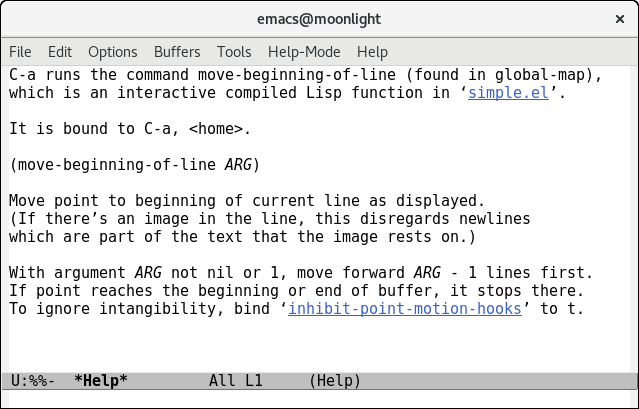

To me, pressing SPC with my thumb (which is the strongest finger and already hanging over the space bar) is a lot more comfortable than having to rotate my wrist so that my pinky can move down to Ctrl. The question of whether it'll be faster depends on whether you see a speed difference between having to type C-c c and SPC c c. I would suggest you seriously consider the "Emacs pinky" phenomenon, which is very real and has made my RSI worse. Similarly, u/mickeyp just posted this about a newer feature that lets Emacs have small "modes" where keys do different things, but it isn't clear how you're supposed to discover these through Emacs' built in online help. This is because the Emacs key binding summaries are designed with an assumption that the command names are description enough. Shift-TAB is bound to org-shiftab but Emacs online help doesn't tell me what org-shiftab actually does.
#Emacs key bindings full#
org-mode is full of commands like this: S-TAB org-shifttab To be fair, even Emacs is sometimes weak in the "self documenting" department as well, since it is gaining more and more modal and context sensitive features. "Vanilla" Emacs is famously "self documenting" but last I checked evil couldn't provide useful help, within Emacs, in the same way, nearly as well. To figure stuff out you often have to resort to looking at vim or neovim documentation.

I also find online help worse for evil bindings. Distros like Doom and Spacemacs integrate these packages for you, but then you're even farther away from the default Emacs experience. You need packages like and and and to make Emacs feel more "evil". Not many packages are designed with evil key bindings in mind. The problem I have with evil in Emacs is that it is another layer on top of vinalla Emacs. They just made me hit the ESC key too much! VI bindings didn't really solve the problem anyway. I fixed that by getting a keyboard with Ctrl and Alt on my thumbs. I initially switched to vim because Emacs made me use the Ctrl and Alt keys too much. Over a slow link that confirmation is delayed. Emacs' non-modal editing is more of a problem over slow links because I find that I want the visual confirmation that the cursor/point moves to where I think it will before I do the next thing. There, the modal editing lets you "type ahead" more certain that what you want to happen will actually happen. I boil it down this way: vim, and modal editing in general, is king in the terminal over a slower link. I don't feel like I was ever "more productive" in one or the other. I have used Emacs vanilla, Emacs evil, and Vim, all for many year blocks of time. I don't think one or the other is significantly "faster" - it is more a matter of preference. If you use it and are comfortable I see no reason to change. Good luck with whichever way you decide to interface. The beauty of emacs is the flexibility for it's users to customize to exactly how they want it. I have a custom built dactyl manuform for this but the kinesis, moonlander and ergodox EZ are some solid prebuilt thumb cluster boards. Lastly I've found when using modifier keys that thumb clusters are really helpful. For example I've extended ctrl-d, alt-d paradigm with H-d which deletes the entire line the point is currently on. I use these for extending a lot of built ins.
#Emacs key bindings windows#
Other rebind capslockĬonsider rebinding and using the windows key and app key to super and hyper ('s-' and 'H-' in emacs notation). I use the edge of my hand as an extra finger dedicated to ctrl pressing.


If I ever get into modal editing it will be by creating my own modal system that I maybe use sparingly.Ĭonsider how you'll handle ctrl.
#Emacs key bindings mod#
I enjoy mod keys as they help me much more with the mental model of controls.


 0 kommentar(er)
0 kommentar(er)
